Explain Different Protocols of Tcp/ip Model
Thankfully its not that different. This layer is included in the reference model but no specific protocol is defined.
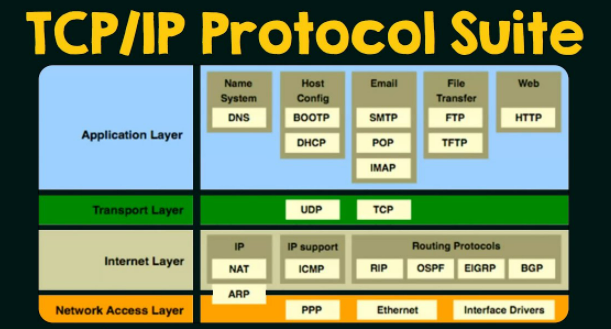
The Tcp Ip Reference Model And Protocol Suite Explained Infospark In
HTTP Hypertext transfer protocol FTP File transfer protocol SMTP Simple mail transfer protocol SNMP Simple network management protocol etc 2.
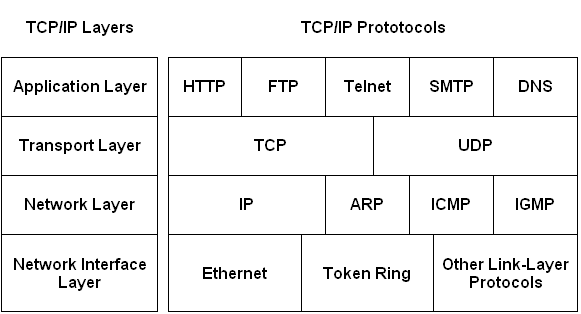
. HTTP stands for Hypertext transfer protocol. 10 rows TCPIP OSI. Just like the OSI model its numbered from the bottom up but the direction depends on if youre.
Different Layers of TCPIP Reference Model. Below we have discussed the 4 layers that form the TCPIP reference model. Varies from host to host and network to network.
The 4 Layers Layers of TCPIP Model Layer 1. The TCPIP model is a part of the Internet Protocol Suite. An IP address is a software address of the node on a computer network.
Internet Layer It defines the protocols for logical transmission of data over the network. The protocols of this layer are Hypertext transfer protocol HTTP File. IP stands for Internet Protocol.
TCPIP was designed to be independent of networking Hardware and should run across any connection media. Protocols are set of rules which govern every possible communication over a network. It is the network model used in the current Internet architecture as well.
And with some magic. This layer allows people to use the network services and establish network-based applications. TCP IP supports the client-server model of the communication system.
It is a framework used for managing the devices on the. This is one of the features of the TCP protocol. The layers in the TCPIP model are assigned various tasks and therefore protocols.
This identity is known as an IP address. Breakdown of TCPIP Four Layers While Kahn and Cerf were working together people considered having the TCPIP Protocol Stack divided into different layers separating the functionality. The protocol suite is named after two of the most common protocols TCP transmission Control Protocol and IP internet Protocol.
Layer 1 Link Layer Layer 2 Internet Layer Layer 3 Transport Layer Layer 4 Application Layer. It provides a unique identity to each node on the computer network. TCPIP does not specifically define any protocol here but supports all the standard protocols.
IP is the part that obtains the address to which data is sent. There are two versions of IP protocol. Some of the popular protocols are.
TCP refers to Transmission Control Protocol. Because theyre so often used together. TCPIP uses only one layer link.
HTTP HTTPS - for web browsing FTP TFTP NFS - for file transfer SMTP - for sending email messages POP3 - for receiving email messages IMAP - for managing email messages on the server. The OSI model while widely referenced isnt used in the real world. OSI model use two separate layers physical and data link to define the functionality of the bottom layers.
TCPIP uses only the Internet layer. The TCPIP protocol suite consists of many protocols that operate at one of 4 layers. The two protocols.
But the transport layer limits the size of data to be sent in one go. TCP is responsible for data delivery once that IP address has been found. TCP splits a message to packets which were transmitted across the internet whereas the IP is accountable to address of every packet hence a chance to forward the exact destination.
Three-Way Handshake Process Data segmentation. Protocol is used to connect to the host so that the packets can be sent over it. UDP is a connectionless protocol used for those applications in which delivery is a must.
7 rows Introduction to the TCPIP Model. There are a lot of application layer protocols that use TCPIP data transmission. The TCPIP model however is the real deal.
Following are the main protocols used in the application layer. Lowest layer of the all. TCPIP means Transmission Control Protocol and Internet Protocol.
Transmission Control ProtocolInternet Protocol TCPIP are two different communication protocols. Up to 30 cash back TCP and IP are two separate computer network protocols. The main protocol in this layer is Internet Protocol IP and it is supported by the protocols ICMP IGMP RARP and ARP.
OSI model the transport layer is only connection-oriented. The application layer is the topmost layer of the TCPIP protocol. HTTP Hypertext Transfer Protocol governs the workings of web browsers and websites.
Up to 10 cash back The TCPIP model covers many internet protocols which define how data is addressed and sent over the internet. Its possible to separate them but there isnt really a point in making a difference between TCP and IP. These protocols describe the movement of data between the source and destination or the internet.
SNMP stands for Simple Network Management Protocol. Four Layers were born. The TCPIP model has four simple layers Application Transport Internet and Link.
It defines how to use the network to transmit an IP datagram. This protocol allows us to access the data over the world wide web. The transmission control protocol is a connection-oriented protocol and it is used to transmit byte streams.
Network Access Layer The Network Access Layer is the lowest layer of the TCPIP protocol hierarchy. This protocol works with TCP and UDP protocols. It also performs the role of the session layer and presentation layer in TCPIP model.
Common internet protocols include HTTP FTP and SMTP and all three are often used in conjunction with the TCPIP model. The application layer sends a huge number of data for transmission to the destination to the transport layer. In practice Ethernet wired and IEEE 80211 wireless protocols are mainly used.
Some of the popular application layer protocols are. This layer receives data from the application layer above it. OSI refers to Open Systems.
TCP and UDP user datagram protocol are used in this layer. TCP also handles the flow control. The protocols in this layer provide the means for the system to deliver data to the other devices on a directly attached network.
OSI uses the network layer to define routing standards and protocols. Transport Layer This layer provides backbone to data flow between two hosts.

The Tcp Ip Protocol Framework Networking Tutorial
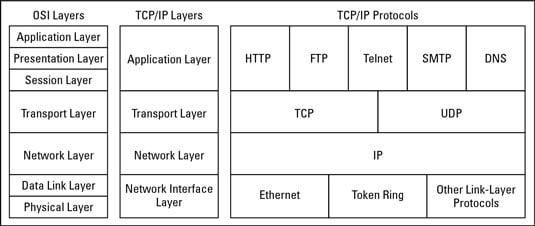
Network Basics Tcp Ip Protocol Suite Dummies

The Tcp Ip Protocol Suite Youtube
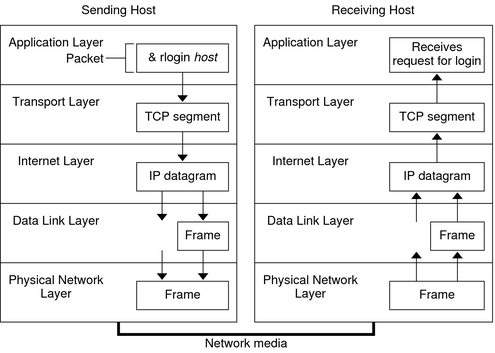
How The Tcp Ip Protocols Handle Data Communications System Administration Guide Ip Services
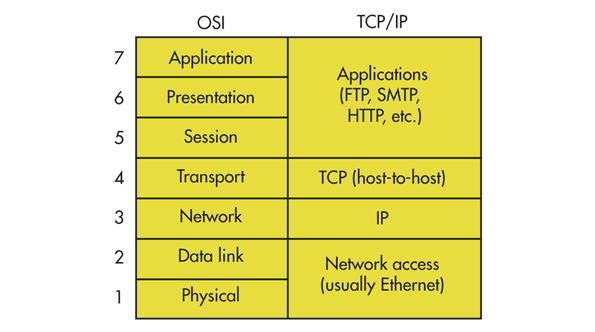
Tcp Ip Protocol Suite Tcp Ip Is A Set Of Protocols That Form By Ian Ames Software Engineering Roundup Medium

Computer Network Tcp Ip Model Javatpoint
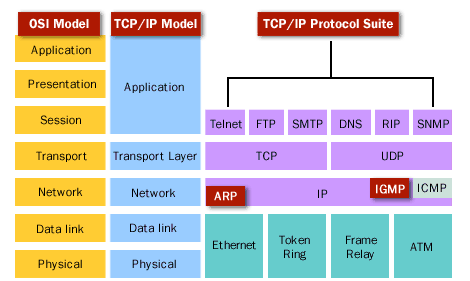
Tcp Ip Protocol Suite Define Components

The Internet Protocol Suite Explained For Beginners Networking Teaching Computer Science
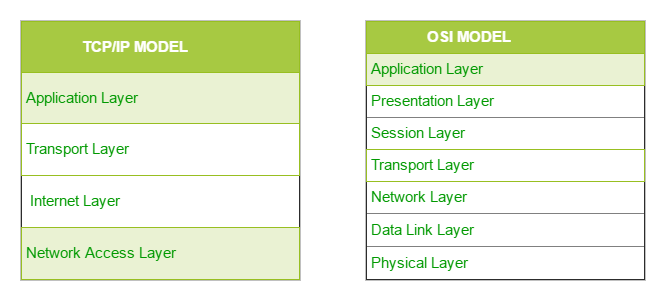
No comments for "Explain Different Protocols of Tcp/ip Model"
Post a Comment